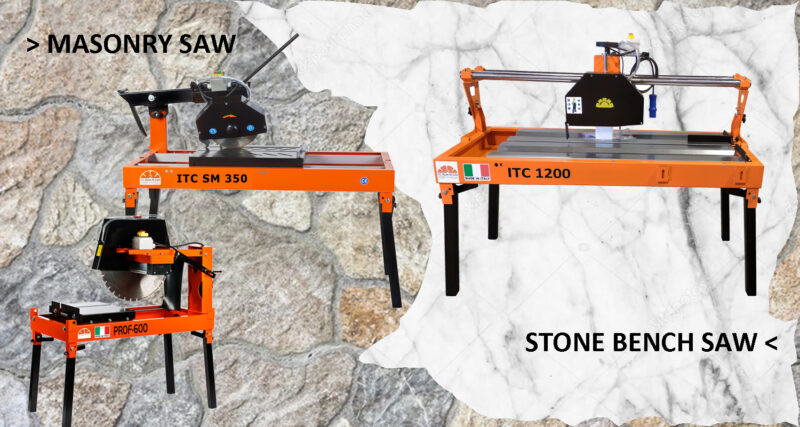If you don’t know which saw to choose, spend few minutes for reading
Understanding the difference between ITC Masonry Saw and Stone Bench Saw will help you select the correct one for your Company or workshop.
What is the overlap?
These 2 saws may look very similar and may appear to perform the same tasks. There is some overlap between them but they work differently and have distinct job functions.
They are both electric and built for wet cutting. They are both recommended to cut hard and/or soft materials such as ceramic, marble, granite, concrete, terrazzo, etc.
What is the difference? When should you use one or the other?
Masonry saws are designed with a sliding table (the stone moves during cutting), while stone saws have a stationary table (the saw moves during cutting).
Projects requiring more accurate cuts are better suited to a stone bench saw. It allows greater precision because of the presence of some exactitude tools (such as side stop, goniometer, precision laser) and the stationary table.
Stone bench saws have the option to perform mitring cuts; this is not available on all masonry saws (example: it is on ITC SM; it’s not on ITC PROF600 and ITC BSC).
Masonry saws have usually a higher maximum cutting depth than stone bench saws. They are designed for thicker materials; sure enough they may have diamond blades with diameter of mm. 600, 650, 725, 750 and so on.
So, in conclusion, one type of saw is usually better suited for some projects than the other. A masonry saw works better with larger pieces, thicker materials with deeper, more straightforward cuts.
If you require performing straight cuts on a piece of 200mm of thick porphyry and cutting through cast concrete of 90mm thick would require a masonry saw. By contrast, if you require making irregular angled cuts on ceramic tiles you must opt for a stone bench saw.


